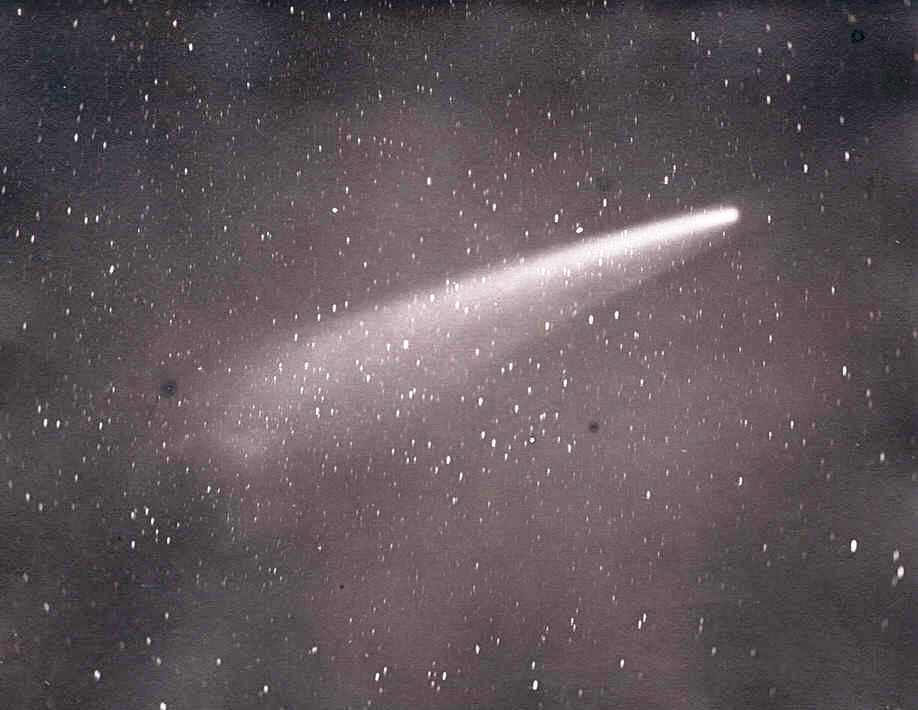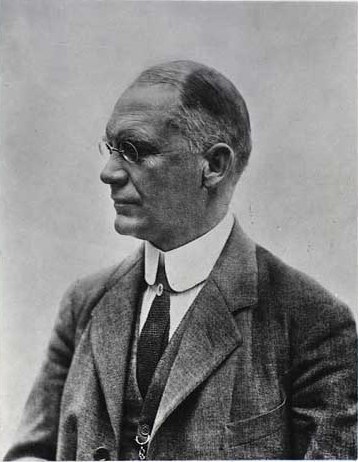|
Johannes Grøntved
Johannes Grøntved (25 January 1882 – 11 July 1956) was a Denmark, Danish botanist. He made investigations of flora and vegetation in Denmark, the Faroe Islands, Iceland, Greenland and Estonia. He was editor of The Botany of Iceland from vol. 3 part 2. Selected scientific works * Grøntved, J. (1927) Formationsstatistiske Undersøgelser paa nogle danske Overdrev. Botanisk Tidsskrift 40: 1-71. Used Christen C. Raunkiær, Raunkiær's quantitative method to describe grassland vegetation. The data were later used by Thorvald Sørensen in developing his ''Sørensen similarity index, quotient of similarity''. * Grøntved, J. (1927) Die Flora der Insel Vormsi, Wormsö - Ein Beitrag zur Flora Estonia, Estlands. Dansk Botanisk Arkiv 5 (4). * Grøntved, J. (1927) Die Flora der Insel Ruhnu, Runö. Svensk Botanisk Tidskrift 23: 399–460. * Carl Hansen Ostenfeld, Ostenfeld, C.H. & Grøntved, Johs. (1934) The Flora of Iceland and Faroe Islands, the Færoes. Copenhagen. * Grøntved, J. (1939) ... [...More Info...] [...Related Items...] OR: [Wikipedia] [Google] [Baidu] |
Denmark
Denmark is a Nordic countries, Nordic country in Northern Europe. It is the metropole and most populous constituent of the Kingdom of Denmark,, . also known as the Danish Realm, a constitutionally unitary state that includes the Autonomous administrative division, autonomous territories of the Faroe Islands and Greenland in the north Atlantic Ocean.* * * Metropolitan Denmark, also called "continental Denmark" or "Denmark proper", consists of the northern Jutland peninsula and an archipelago of 406 islands. It is the southernmost of the Scandinavian countries, lying southwest of Sweden, south of Norway, and north of Germany, with which it shares a short border. Denmark proper is situated between the North Sea to the west and the Baltic Sea to the east.The island of Bornholm is offset to the east of the rest of the country, in the Baltic Sea. The Kingdom of Denmark, including the Faroe Islands and Greenland, has roughly List of islands of Denmark, 1,400 islands greater than in ... [...More Info...] [...Related Items...] OR: [Wikipedia] [Google] [Baidu] |
Sørensen Similarity Index
Sørensen () is a Danish- Norwegian patronymic surname meaning "son of Søren" (given name equivalent of Severin). , it is the eighth most common surname in Denmark. Immigrants to English-speaking countries often changed the spelling to ''Sorensen'' or ''Sorenson'' in order to accommodate English orthographic rules. English-language media often similarly renders ''Sørensen'' as either ''Sorensen'' or ''Sorenson''. A parallel form of similar origin is Severinsen. The numbers of bearers of the surnames ''Sørensen'' and ''Severinsen'' in Denmark and Norway (2008): It may refer to a number of people: People with the same name * Ole Sørensen * Peter Sørensen In sports * Aksel Sørensen (1891–1955), Danish gymnast * Andreas Sørensen (born 1984), Danish footballer *Anders Sørensen (born 1962), Danish golfer * Arne Sørensen (1917–1977), Danish footballer and manager *Asger Sørensen (born 1996), Danish footballer *Chris Sørensen (born 1977), Danish footballer *Chris Anker ... [...More Info...] [...Related Items...] OR: [Wikipedia] [Google] [Baidu] |
1882 Births
Events January * January 2 ** The Standard Oil Trust (business), Trust is secretly created in the United States to control multiple corporations set up by John D. Rockefeller and his associates. ** Irish-born author Oscar Wilde arrives in New York at the beginning of a lecture tour of the United States and Canada. * January 5 – Charles J. Guiteau is found guilty of the assassination of James A. Garfield (President of the United States) and sentenced to death, despite an insanity defense raised by his lawyer. * January 12 – Holborn Viaduct power station in the City of London, the world's first coal-fired public electricity generating station, begins operation. February * February 3 – American showman P. T. Barnum acquires the elephant Jumbo from the London Zoo. March * March 2 – Roderick Maclean fails in an attempt to assassinate Queen Victoria, at Windsor, Berkshire, Windsor. * March 18 (March 6 Old Style) – The Principality of Serbia becomes ... [...More Info...] [...Related Items...] OR: [Wikipedia] [Google] [Baidu] |
Ove Paulsen
Ove Vilhelm Paulsen (22 March 1874 – 29 April 1947) was a Danish botanist. Biography Paulsen was born at Aarhus, Denmark. He studied at the University of Copenhagen under professor Eugen Warming (1841-1924). Paulsen was a keeper at the Botanical Museum of the University of Copenhagen from 1905 to 1920, when he became professor of botany at the Pharmaceutical College in Copenhagen, a position he held until 1947. He studied the flora of Denmark, plankton of the North Atlantic and the flora of Central Asia. He went on expeditions to Northern Persia and Pamir as early as 1898–1899. During his travels through Pamir, he was accompanied by the Danish explorer Ole Olufsen (1865–1929). Ove Paulsen visited North America with the second International Phytogeographic Excursion from July to September 1913 and subsequently described the biome zonation from east to west in a paper.Paulsen, Ove (1915) Some remarks on the Desert Vegetation of America. The Plant World 18: 155-161. Th ... [...More Info...] [...Related Items...] OR: [Wikipedia] [Google] [Baidu] |
Carl Hansen Ostenfeld
Carl Emil Hansen Ostenfeld (born Carl Emil Ostenfeld-Hansen) (3 August 1873 – 16 January 1931) was a Danish systematic botanist. He graduated from the University of Copenhagen under professor Eugenius Warming. He was a keeper at the Botanical Museum 1900–1918, when he became professor of botany at the Royal Veterinary and Agricultural University. In 1923, by the early retirement of Raunkiær's, Ostenfeld became professor of botany at the University of Copenhagen and director of the Copenhagen Botanical Garden, both positions held until his death in 1931. He was a member of the Royal Danish Academy of Sciences and Letters and served on the board of directors of the Carlsberg Foundation. Ostenfeld is known as an explorer of the Danish flora, including marine plankton, as well as the flora of Western Australia. Ostenfeld participated in the Ingolf expedition (1885-86) to the waters around Iceland and Greenland, and in 1911 in the International Phytogeographic Excursion ... [...More Info...] [...Related Items...] OR: [Wikipedia] [Google] [Baidu] |
Svensk Botanisk Tidskrift
''Svensk Botanisk Tidskrift'' is a peer-reviewed scientific journal on botany published by the Svenska Botaniska Föreningen since 1907. It is published five times a year. It is abstracted and indexed in BIOSIS Previews and Scopus Scopus is a scientific abstract and citation database, launched by the academic publisher Elsevier as a competitor to older Web of Science in 2004. The ensuing competition between the two databases has been characterized as "intense" and is c .... References External links * (in Swedish) (link accessed 21 February 2020) Online archive(1907-1911) * Botany journals Swedish-language journals Publications established in 1907 1907 establishments in Sweden {{Botany-journal-stub ... [...More Info...] [...Related Items...] OR: [Wikipedia] [Google] [Baidu] |
Ruhnu
Ruhnu (; ; ) is an Estonian island in the Gulf of Riga in the Baltic Sea. Its territory of is administratively part of Saare County, Saare ''maakond'' (county). Ruhnu lies geographically closer to the coast of Courland on the mainland of Latvia than it is to any point in the rest of Estonia. With less than 150 official residents, the Ruhnu Parish, Ruhnu ''Parish (administrative division), vald'' (parish) has the smallest population of Estonia's 79 Municipalities of Estonia, municipalities. Before 1944, it was for centuries populated by Estonian Swedes, ethnic Swedes and Law of Sweden, traditional Swedish law was used. Important Bird Area The island has been designated an Important Bird Area (IBA) by BirdLife International because it supports significant numbers of long-tailed ducks and velvet scoters, both wintering and on passage. History The first archaeological artifacts of human activity in Ruhnu, assumed to be related to seasonal pinniped, seal hunting, date back to ... [...More Info...] [...Related Items...] OR: [Wikipedia] [Google] [Baidu] |
Dansk Botanisk Arkiv
''Dansk Botanisk Arkiv'' was a Danish scientific journal or monograph series concerning botany, issued by the Danish Botanical Society. It was published from 1913 to 1980. Articles were written in Danish, German, English and French. The synonym Res Botanicae Danicae was printed on the front page of some issues. In 1980, it was fused with '' Botaniska Notiser Supplement'' under the name '' Opera Botanica'', which since then has been the monograph series of the '' Nordic Journal of Botany''. External links Dansk Botanisk Arkivat HathiTrust HathiTrust Digital Library is a large-scale collaborative repository of digital content from research libraries. Its holdings include content digitized via Google Books and the Internet Archive digitization initiatives, as well as content digit ... Digital Library Dansk Botanisk Arkivat Botanical Scientific Journals 1913 establishments in Denmark Botany journals Publications established in 1913 {{botany-journal-stub ... [...More Info...] [...Related Items...] OR: [Wikipedia] [Google] [Baidu] |
Vormsi
Vormsi () is the fourth-largest island of Estonia, measuring and a registered population of around 400. It is located in the Baltic Sea, northwest of the mainland and east of Hiiumaa island, and is part of the West Estonian archipelago (Moonsund archipelago). Administratively the island forms part of Vormsi Parish (rural municipality). History The documented history of Vormsi dates back as far as the 13th century. During most of this time, the island was inhabited by Estonian Swedes ("rannarootslased" in Estonian or "coastal Swedes" in English). ''Ormsö'' in Swedish means "Orm's island", and can be translated also as "Snake island". The Estonian name ''Vormsi'' and German ''Worms'' have both been derived from ''Ormsö''. The island's population reached 3,000 before World War II. During the war, nearly all of Vormsi's population, along with other Swedes living in Estonia, forming the larger region of Aiboland, were evacuated, or fled, to Sweden. Villages The villages ... [...More Info...] [...Related Items...] OR: [Wikipedia] [Google] [Baidu] |
Thorvald Sørensen
Thorvald (Thorwald) Julius Sørensen (4 July 1902 – 21 June 1973) was a Danish botanist and evolutionary biologist. Biography Sørensen was professor at the Royal Veterinary and Agricultural University 1953–1955 and at the University of Copenhagen 1955–1972. He was director of the Copenhagen Botanical Garden and Botanical Museum during the same period. Thorvald Sørensen spent the years 1931–1935, based on Ella Island, studying plants in the then little known North-East Greenland. He published the botanical research of the Three-year Expedition to East Greenland. He also published a doctoral thesis on the annual phenological rhythm of the High Arctic plant species, including the pollination of their flowers (1941). He critically revised the Greenland flora and sorted out taxonomy of a number of difficult taxa, most notably ''Puccinellia''. He carried out a number of studies in the evolutionary biology of plants, such as ''Taraxacum'', ''Capsella bursa-pastoris' ... [...More Info...] [...Related Items...] OR: [Wikipedia] [Google] [Baidu] |
Botanist
Botany, also called plant science, is the branch of natural science and biology studying plants, especially Plant anatomy, their anatomy, Plant taxonomy, taxonomy, and Plant ecology, ecology. A botanist or plant scientist is a scientist who specialises in this field. "Plant" and "botany" may be defined more narrowly to include only land plants and their study, which is also known as phytology. Phytologists or botanists (in the strict sense) study approximately 410,000 species of Embryophyte, land plants, including some 391,000 species of vascular plants (of which approximately 369,000 are flowering plants) and approximately 20,000 bryophytes. Botany originated as history of herbalism#Prehistory, prehistoric herbalism to identify and later cultivate plants that were edible, poisonous, and medicinal, making it one of the first endeavours of human investigation. Medieval physic gardens, often attached to Monastery, monasteries, contained plants possibly having medicinal benefit. ... [...More Info...] [...Related Items...] OR: [Wikipedia] [Google] [Baidu] |



